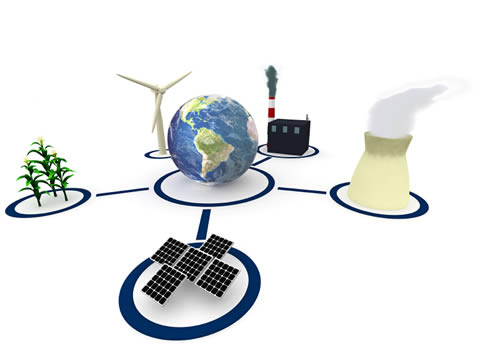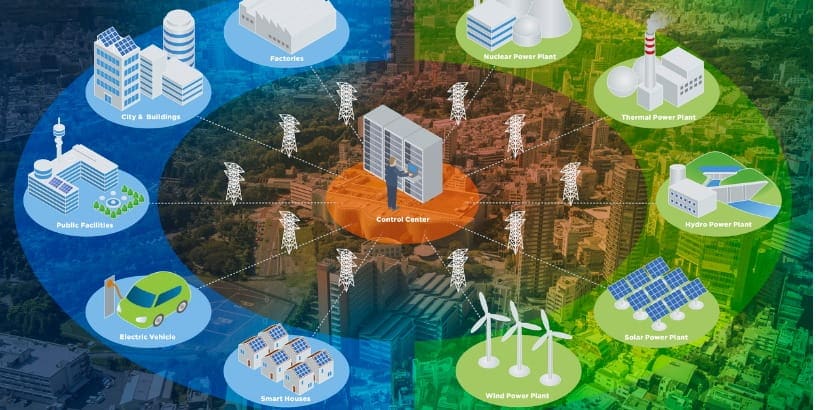
A smart grid is an advanced electrical grid that uses digital technology to track, communicate and manage the generation of electricity. It also manages the distribution and consumption of electricity. Smart grids are currently under development in most of South American countries. It integrates various technologies and systems to enhance the traditional power grid. This leads to several benefits like improved energy efficiency, reduced operational costs and increased integration of renewable energy sources. The integration of smart grids in South America will help the region meet its growing energy demands. This is while promoting environmental stewardship and economic development.
A line guard is a safety device used to protect electrical conductors from mechanical damage. It also helps improve the safety of power transmission lines. Line guards install at several points along the transmission route to shield the conductors from external elements. Line guards help prevent electrical flashovers which occur when electricity jumps from the other conductor to the ground. They enhance safety for maintenance crews, animals and the public.
Smart grids have several components that ease the development in South America. These include advanced metering, two-way communication, automation and control, demand response and energy storage solutions. The adoption of smart grid technologies helps the region to meet its growing energy demands.
Technologies leading to adoption of smart grids in South America
There are several technologies that enhance the efficiency, reliability and sustainability of power systems. These are cutting-edge technologies driving the adoption of smart grids in South American energy infrastructure. Adoption of these technologies in South America will make South America a leader in smart grid implementation. A line guard can help dampen vibrations caused by wind or other environmental factors to extend their lifespan. The following are the technologies promoting the adoption of smart grids.

- Advanced metering infrastructure – smart meters provide detailed usage data. They also enable utilities to manage demand more effectively.
- IoT devices – these connected devices enables the seamless communication and integration of various components within the smart grid. Sensors, smart appliances and connected devices provide real-time data.
- Energy storage systems – advanced battery storage systems help balance supply and demand. These systems store excess energy generated during low demand periods and release during peak times.
- Renewable energy integration – the integration of renewable energy sources is easy by smart grid technologies. Advanced forecasting and real-time monitoring systems optimize the use of solar and wind power.
- Artificial intelligence and machine learning – AI and ML algorithms analyze vast amounts of data. This is to protect and respond to grid demands, detect faults and optimize energy distribution.
- Distributed energy resources – these include rooftop solar panels and small wind turbines. They contribute to decentralized energy production.
- Smart grid cybersecurity – strong cyber security measures protect smart grid infrastructure from cyber threats. Advanced encryption, intrusion detection systems and secure communication protocols safeguard data and ensure grid integrity.
Benefits of smart grid development in South America
The development of smart grids in South America’s energy infrastructure offers several benefits. These benefits range from improved reliability and efficiency to increased integration of renewable energy and economic growth. Addressing the several challenges helps South America to build a more sustainable, resilient and efficient energy future. Line guard provide mechanical protection, enhance safety and improve the reliability of power delivery systems. The following are the benefits of the development of smart grids in South America.

- Enhanced reliability and resilience – smart grids improve the reliability of the electricity supply. This is detecting and responding to faults, reducing the frequency and duration of power outages. They also enhance grid resilience against natural disasters, technical failures and other disruptions.
- Increased energy efficiency – smart grid technologies optimize the distribution of electricity to reduce losses. Advanced metering and demand response programs also help balance supply and demand.
- Integration of renewable energy – smart grids ease the integration of renewable energy sources. They help manage the variability of these sources and ensure a stable energy supply. Reduced use of fossil fuels contributes to environmental sustainability.
- Enhanced grid management – automated controls and advanced analytics enable more efficient grid management. The amounts of data collected from smart grid components allow utilities to make data driven decisions.
- Cost savings – improved grid management and reduced energy losses translate into lower operational costs. Real-time data and demand response programs enable consumers to track and adjust their usage.